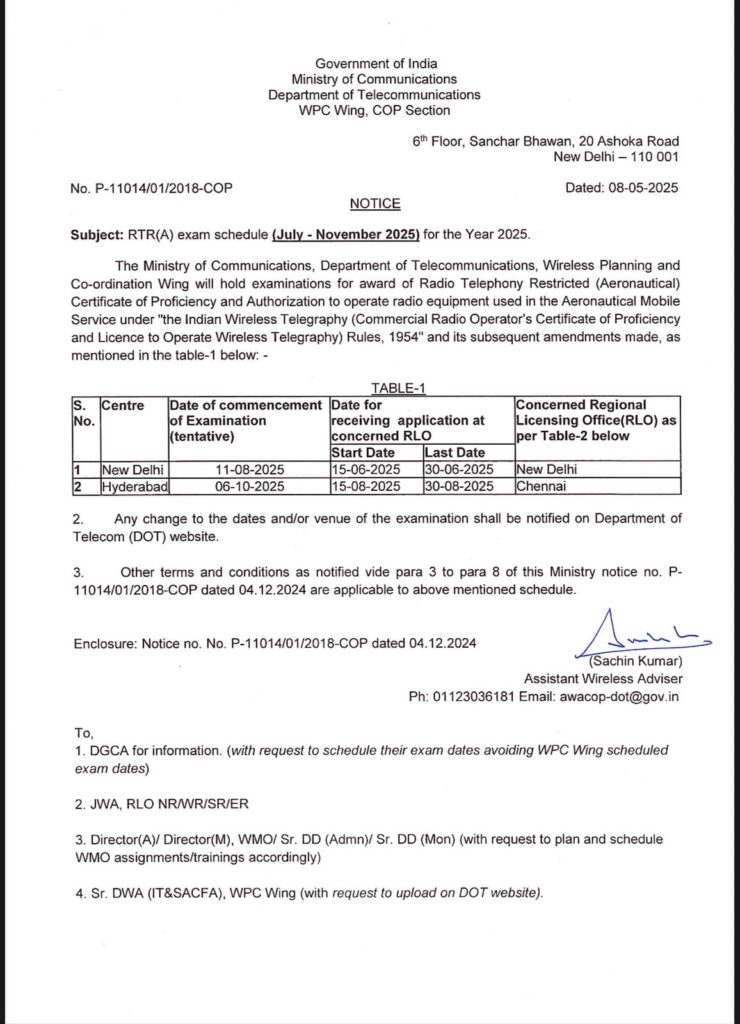In the aviation world, effective communication is the backbone of safe and efficient operations. Whether you’re navigating congested airspace or coordinating with ground control, clear and precise communication can make all the difference. This is where the Radio Telephony Restricted (Aeronautical), or RTR (A), comes into play—a crucial license for aspiring pilots in India.
The RTR (A) certification, issued by the Wireless Planning and Coordination (WPC) Wing in collaboration with the Directorate General of Civil Aviation (DGCA), is a mandatory requirement for any pilot who wishes to operate radios onboard an aircraft. This license not only verifies your ability to handle radio communication equipment but also ensures you’re well-versed in aviation phraseology, standard communication protocols, and handling emergencies.
Pilots with an RTR license from other countries must convert it to meet Indian regulations. The process varies based on the license’s origin:
Understanding Indian airspace protocols and communication practices is crucial for a smooth conversion, ensuring compliance and effective communication in Indian skies. In this blog, I’ll guide you through the essentials of RTR—what it is, why it’s important, and how you can ace the examination to add this indispensable qualification to your aviation career.
Foreign CPL + Foreign FRTOL + Foreign RTR
a. 300+500=800 CAD= 49000 INR (Travel & Accomodation extra)
b.6000 INR Canadian Medical
c.300$ Shipping of Canadian license
d.Indian license fees as applicable
e.TOTAL 80,000 INR
